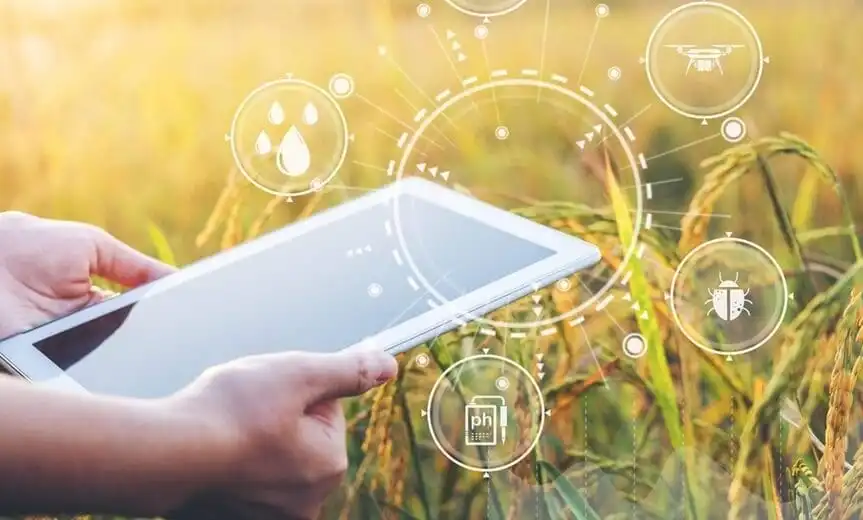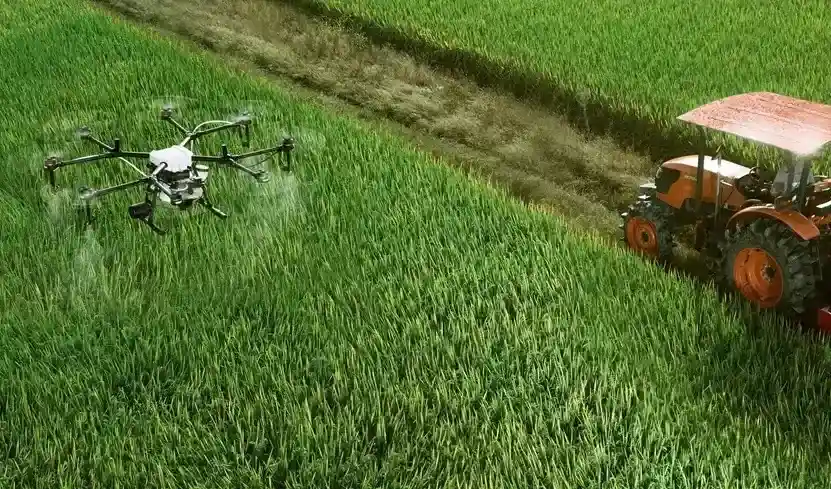AI Pest Control
Pests are one of the common causes of crop losses. In huge cultivational areas, traps are common but immediate pest identification need more effective technology. It makes little difference whether farmers use traps or not; pest detection must be done promptly, autonomously, and accurately.
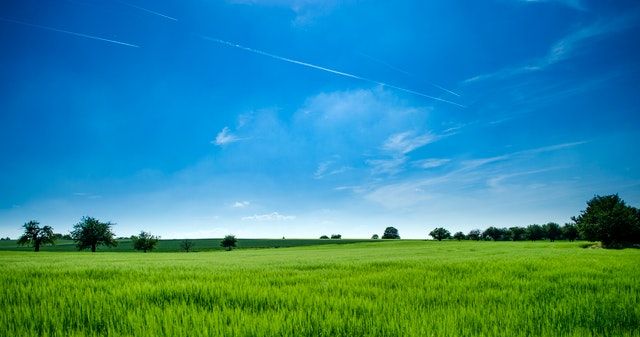
Pests are one of the major causes of agricultural losses. Insects can be very damaging for the crop as they live and get food from leaves, badly affecting the photosynthesis process and causing severe diseases. There are several techniques for pest control, including chemical, biological, and technical. But to approach effectiveness, proper monitoring of the whole property is suggested that could be possible with AI Pest Control.
Mostly, agriculture monitoring is done passively by labor as a daily routine activity. However, it is not the right way to detect and treat an infestation as when it is detected; big damage is done before. Immediate pest identification needs more efficient technology, usually in large cultivational areas. And commonly used tool for monitoring pests systemically is traps. Its implementation must be proper to know insect sample population over the whole area under crop-production. Without intelligence solution’s involvement, the traps will be handled manually, and infestation evaluation is performed visually. It ultimately introduces a unfair evaluation of the condition. Hence, it doesn't matter if farmers are using traps or not; there is a dare need for pest detection quickly, autonomously, and accurately.
According to FAO estimation, up to 40% of annual crop production is damaged by pests globally. Plant diseases cost over $220 billion of the global economy, while only invasive insects cost $70 billion. Moreover, the agriculture sector loses around $540 billion worldwide due to invasive pests causing damage and disease per year. Climate change and insects together also contributes to the spread and rise of new challenges for proper crop growth. It means that offering affordable, accessible, and comprehensive technology helps millions of smallholder farmers in developing countries produce up to 90% of food with the least damage. Global food protection and production require innovative digital tools in the least time and investment.
In literature, newly introduced methods deal with two common issues: detection and classification.
- Detection: It distinguishes a direct pest type from other content of the picture. Binary classification method can be used, either by the presence or absence of the target pest. The purpose of detection is to estimate the severity of outbreaks caused by pests.
- Classification: It helps identify and separate various pest species and might be considered as multiclass recognition.
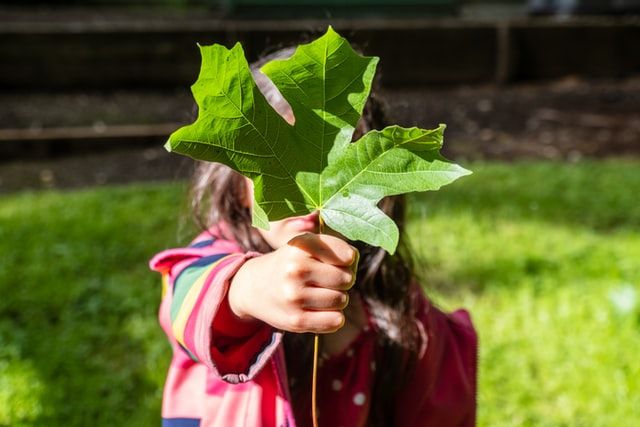
Both techniques are related to pest attack, their number, and severity caused by them on a specific crop. Hence, researchers use different techniques to train their algorithms.
The automatic approach for identifying pests can be distributed into four phases: data collection, building model, installation in a usable tool, and its practical application. According to the literature, most of the studies focus on the second stage. The first stage involves describing how the data was collected, but the detailed description of data representation and limitations of the database is rarely discussed. Further, the last two stages are beyond the study scope as the practical use of technologies is closely related to the user experience and consumer acceptance.
Here is a list of a few technologies developed by big giants for supporting farmers to combat pest diseases by their early detection.
PLANT DISEASE IDENTIFICATION APP: TUMAINI
Banana is considered one of the favorite fruits worldwide, but unfortunately, banana crops are more prone to pest attack. It threatens the smallholder farmers who rely on this investment and do not have enough resources to monitor their crop health.
A new AI crop app aids resource-poor farmers in this respect to identify and treat banana disorders accurately. Namely, Tumaini, meaning hope, helps improve crop yield by alerting nonprofit and government sectors to control outbreaks in bananas and other crops. Its system is trained on NVIDIA GPU technology, and it achieved around 90% accuracy in its operation of detecting five banana tree diseases caused by one pest. It is free-of-cost app available on Google Play Store and tested in six countries, including the top 3 banana-producing lands.
- Banana Crop Disease: Say Yellow to Intelligence
It helps farmers diagnose issues in their banana crops by confusing fungal, bacterial, and viral active agents. The common symptom includes the appearance of yellow leaf spots and damage. Wrong interpretation of these signs may lead to time, resources, and crop wastage.
The project leader in the International Center for Tropical Agriculture, Michael Selvaraj, explained that smallholders have minimum resources to offer on-time fertilizer availability and treatment if the crop is diseased. He added that spraying fungicides on their crops or plants surviving in bacterial attack (due to the lack of knowledge) is just a waste of their money. CGIAR, based in Cali, Colombia, is a nonprofit research organization of an international agriculture innovation network.
Scientists from Biodiversity International nonprofit organization helped the team label a dataset of 20,000 banana plant images manually. They collected bananas from farms in Southern India, Burundi, Benin, Uganda, and the Democratic Republic of Congo. They aimed to train and improve the intelligent system's ability to read low-resolution images with background elements, including leaves and neighboring plants. Banana is one of the challenging crops for treating against appeared symptoms in various parts of the plant.
The dataset was collected to train around six neural networks for analyzing images from different parts of the plant. In this way, farmers can capture pictures of several parts of diseased crops using the Tumaini app like the fruit and leaf to verify the results of the AI pest control model. After disease detection, the app helps farmers by sharing treatment guidelines. It comes in five different languages to make it an audience-friendly app: English, Swahili, French, Tamil, and Spanish. Plus, it works in additional two Indian languages, including Malayalam and Hindi.
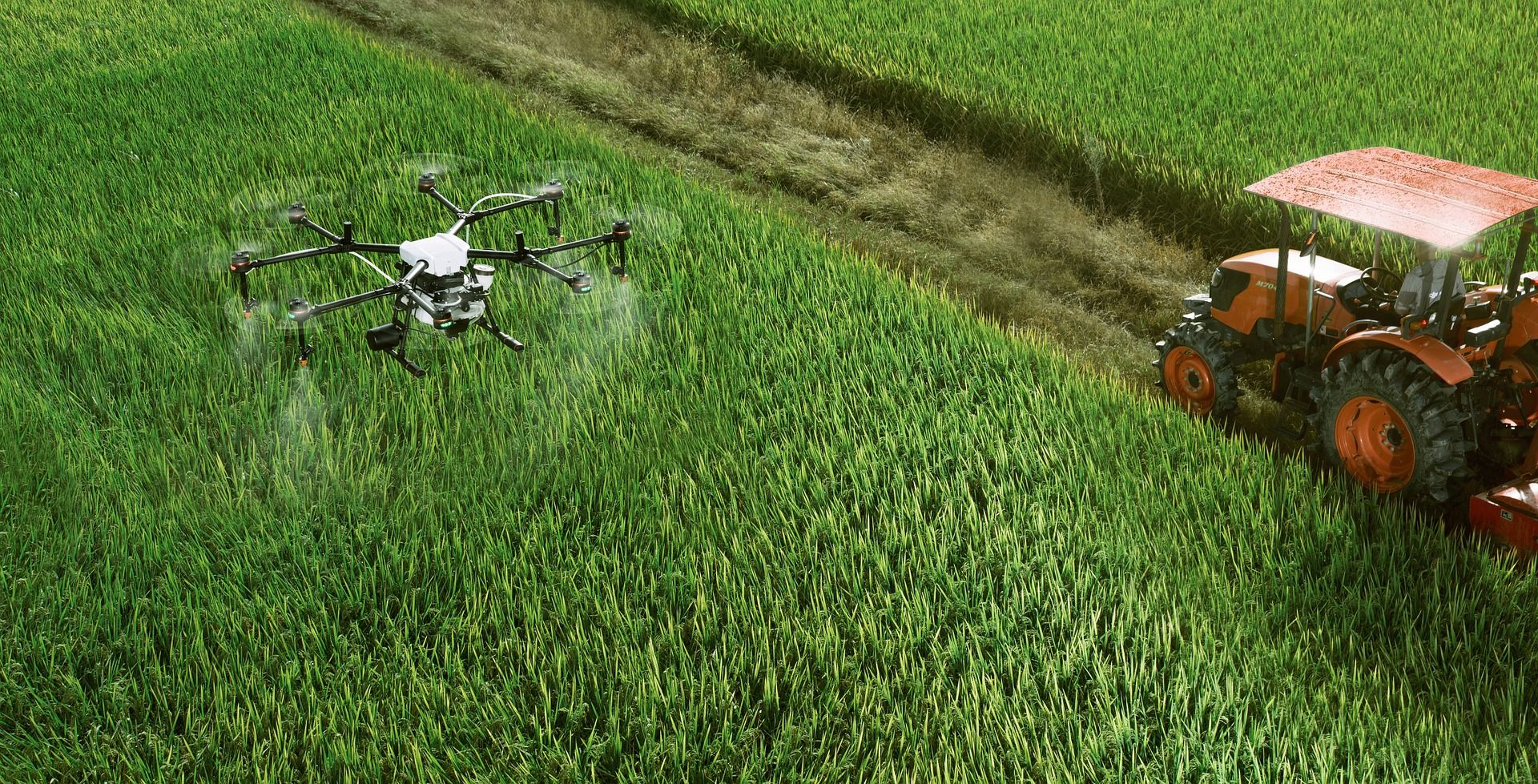
- Spotting Disease Earlier
Crops, if left unchecked, promote disease spread in the whole crop via infected tools, equipment, water, soil, and insects. Some fungal germs like Fusarium wilt survive in the soil for decades making the soil unfit for further crop production.
Fusarium wilt has been commonly affecting banana crops in Colombia for the last few years. At the start, the farm-holders misunderstood the disease and considered it virus-based. The misinterpretation by government agencies and pathologists led to the spread of disease over a significant area and caused the significant loss. Continuous agriculture monitoring and early detection are necessary, and this app encourages the farmers to click pictures and geotag them, so the researchers help them in real-time if they find any infestation symptoms. The team takes the sample and performs an inspection to avoid the outbreak.
Pictures uploaded to Tumaini reach the GPU system of pathologists for inference, and it takes only a few seconds depending on the internet connection speed. Moreover, they add these pictures in their database to easily track global trends regarding banana diseases. The researchers plan to collect and analyze aerial images of crops using drones and satellite programs of the European Space Agency. The researchers will create a surveillance tool to monitor banana crops' growth and disease trends globally by combing the data with GPS-tagged crop images.
The team will enhance the capabilities of the Tumaini app for the detection of other banana tree diseases and staple crops like beans. It will also be available in offline mode in the future so that farm-holders can analyze images even without a stable internet connection. Offline mode will have a user-friendly and multi-lingual interface making it a perfect help for banana farmers. App’s demand will rise in coming years with rising in smartphone adoption in India and Africa, two major lands for banana production. However, pest control is still in its early growth stages in agriculture, and this technology will grow with time, having an impact overcoming 30 years.
NURU PROJECT, THE EXPANSION OF AI: CROP DISEASE DIAGNOSING HELPER
Nuru came into the market in 2018, and the team reported its downloads all across Africa and Southeast Asia. The United Nations used this app across 90 countries with 21 languages to support farmers in crop health risks. PlantVillage Nuru project got an extensive grant for creating an intelligent solution to identify plant pests and diagnose crop disorders. The international research consortium, CGIAR, awarded $250,000 to expand its activities globally. The project's focus is the detection of cassava disease via the Nuru AI app, and the team is working to able it for detecting other plant diseases too.
The associate professor of entomology and biology at Penn State University, David Hughes, and his team developed an AI assistant compatible with smartphones. It works on offline mode to detect cassava disease efficiently when the part of the threatened part is exposed to it. The Nuru findings were twice as accurate as human expert crop advisors. The plant app disease identifier is connected with the PlantVillage platform and shares bespoke academic experts and government advice with farmers. The app allows communication in different languages, including English, Twi, Swahili, French, and Hindi.
Mainly, the app is trained to identify plant pests and diseases in the sweet potato, which is a major crop in sub-Saharan Africa. According to an estimation, potato blight alone causes a $5 billion loss annually to farmers in developing countries; this loss is equal to 60%of their yield to pests.
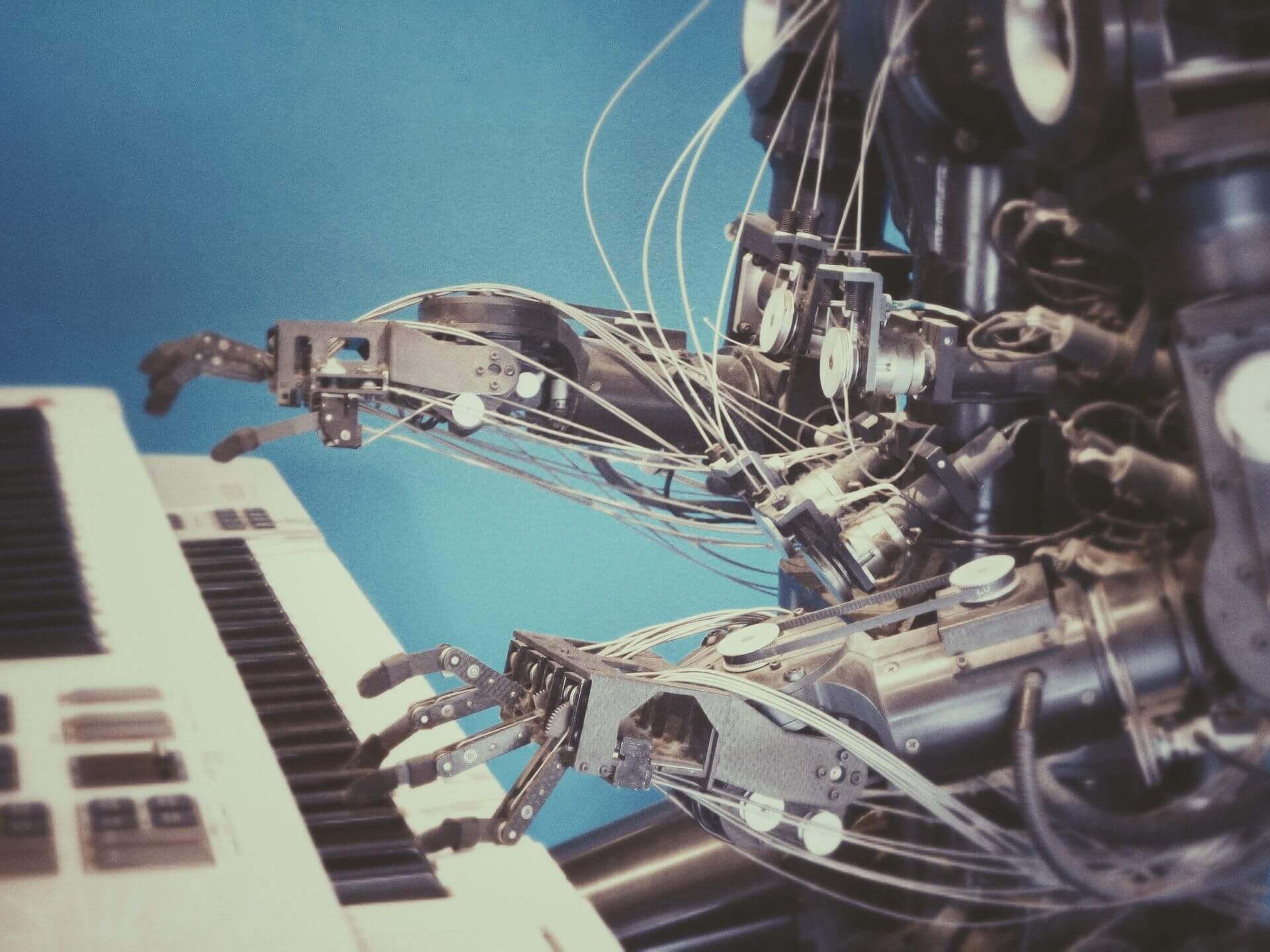
PLANTIX
Plantix, Strey’s Berlin-based initiative, PEAT, uses ICRISAT’s scientific image data, machine learning, and institutional research to collect 75,000 daily user details about pests’ causing plant diseases.
The farmer uploads the images in a cloud-based AI app with GPS locations. The app, Plantix, detects crop type in the picture and diagnose disease, pest name, and nutrient deficiency to the plant. It suggests targeted biological treatments to the farmers to reduce the agrochemicals in groundwater due to the overuse of pesticides and herbicides. Plantix app used deep learning, an incredible AI tool that involves neural networks. The researchers trained DL models on certain patterns of plant parts found in the database. The United Nations, Food and Agriculture Organization reported that about 20 to 40 percent of crop yields are lost due to pests causing global plant diseases.
Its purpose is to help farmers know pest damage, nutrient deficiency, and plant disease. Moreover, it also provides guides from experts on treating their crops in a scientifically verified way. 85% accuracy in insect detection via Plantix is achieved. Diseases with shorter life cycles are easily detectable as the system requires only four hundred related images to diagnose rightly. Others may demand over five thousand pictures to train algorithms exceptionally. Currently, the system can detect five hundred diseases focusing on crops including rice, tomato, wheat, and cotton. The app is available in eight languages and downloaded by over 12 million people globally.
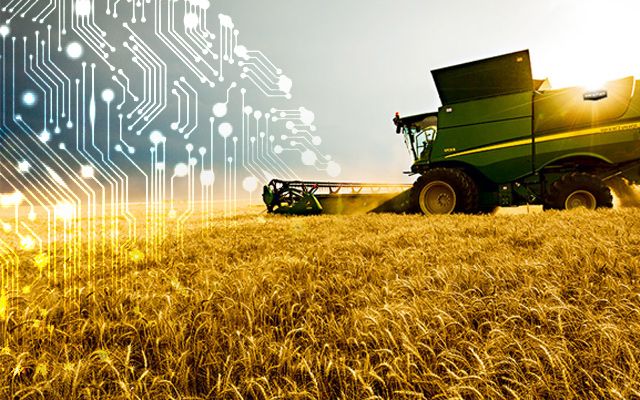
OTHER TECHNOLOGIES AGAINST PEST CAUSING PLANT DISEASES
Pest control agencies strive to introduce innovative technology and solutions to treat and manage pests. They struggle to reduce or eliminate their negative impacts on the natural environment. Some productive ways are mentioned as:
- Insect Growth Regulators
It is just like a pheromone trap. IGRs use multiple synthetic hormones that are released by insects naturally. The system works by disturbing pests’ life cycle; hence, it prevents them from reaching puberty as their molting process and exoskeleton formation is disturbed, making them nonvulnerable and defenseless. Reminder, these synthetic pheromones are toxic to humans.
- Fly Baits
The given innovation is used to control flying species like sticker panels with insecticides and food particles (to attract insects). Fly baits stay functional for up to seven months and knock out flies in less than a minute.
- Nontoxic Heat Treatments
It is one of the least poisonous, sustainable, and efficient solutions farmers must prefer over hazardous chemicals. It works to eliminate cockroaches and bedbugs. Due to heat, this technique weakens insects from inside by dehydrating their cells. Sometimes, it might be difficult for sprays to penetrate deep into their exoskeletons, so 50οC to 60οC is the optimum temperature to kill insects at all stages, including larva and pupa.
- Bio-Rational Materials
These materials have little or no negative impact on the natural environment. Pheromones are one of the examples of these materials. Insects and mammals release pheromones to influence their partners physiologically and behaviorally. These chemicals keep the male moth busy in finding their females for mating. The chemically assisted technique keeps the ants away from their usual locations, sends them towards insecticides, and finally kills them.
- Second-Generation Green Products
First-generation insecticides are bad at smell due to essential oil and may have a negative effect. Green products are of great interest now as they have authentic ingredients, enhanced performance, and least crop damages. Plus, second-generation products are environmental-friendly and without smell when applied.
- AI-Powered Sensing Technology
The artificial intelligence-based technology is directly attached to the tress to detect and remove pests. Some of them stay deep inside the wood and cause severe damage, thanks to AI pest control that extract them. Artificial intelligence performs its exceptional task in collaboration with vibroacoustic insect libraries and vibration-sensitive sensors.
- Drone Pest Control
Drones are highly efficient in exploring places that are not easily reachable for humans. The technology saves time by identifying plant pests’ infestation and reducing the risk factor.
- Thermal Imaging Technology
Thermal imaging technology helps find the pests behind a wall or other things. Its thermal sensors sense the heat coming out of insects' bodies.
- Rodent Birth Control
Pest controlling industries use birth control techniques to stop their reproductive cycle and ultimately control their population.
- Communication Tools
It is just another name for smartphone apps that share real-time information about the captured image of the crop to alert farmers about pest attacks. Pest control experts have access to an online database to track and treat multiple insects and offer real-time treatments to the farmers.
- Gel Application
Its working principle is based on the lure-and-kill technique. The UV-stable gel is coated on the device that attracts and traps insects and kills them well.
- Plant Activator and Fungicide
These products improve germination, plant survival rate, and growth. Plus, they exceptionally influence bacteria, including E. coli, Cholera, and Salmonella. It performs dual action as also used in disinfecting products, foliar sprays, and seed treatments.
- Third Generation SDHI Fungicides
This technique is used to treat common pathogens of barley and wheat.
- Growth Promoters
These promoters act as a three-in-one product that simultaneously includes a biocide, a plant activator, and a fungicide. It has low toxicity and has a hydrophilic powder with zinc.

WRAPPING NOTE
In addition to plant pests and disease identification, satellites help estimate crop productivity and water availability to share relevant guides with the farmers. Satellites suggest the best place for crops to be grown accurately, even in extreme weather conditions. AI pest control strategies must be available to all farmers, and for it, constant training, updating, and maintenance from field experts is required. In the Fourth International Revolution, the world will use technology to treat global malnutrition and hunger.

